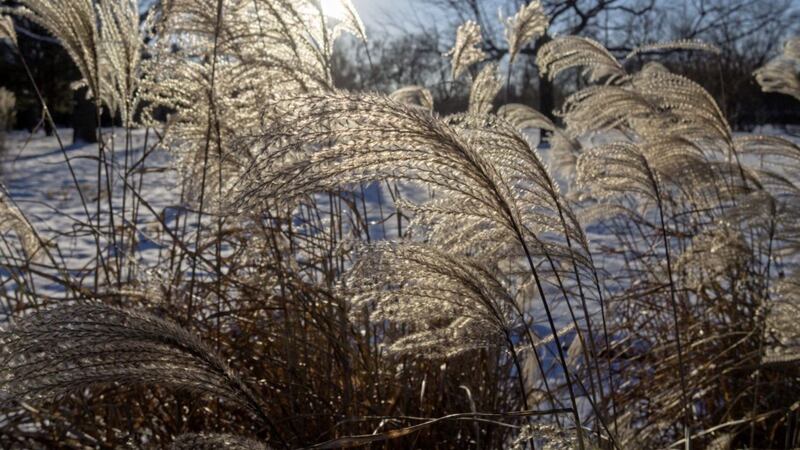FOR anybody left disheartened by last week’s column and particularly the reminder that it’ll be the end of February before dusk comes after six o’clock, I have some good news, of sorts – there are only 40 days until the winter solstice.
While that piece of information was designed to lift your spirits, I suspect it has merely underlined the fact that ALL of winter is in front of us and unless you’re lucky enough to be migrating south or hibernating for the next few months, the outlook for the short-to-medium term is mostly dark and cold.
As was also noted in last week’s column, the ornamental garden’s pleasures are much more limited at this time of year. From here on it’ll be mostly barks, branches and architectural plants that catch the eye. Ornamental grasses fall into latter category, where the appeal is about the overall form rather than a reliance on flowers and colour for impact.
A planting genre that has become fashionable in the past 10-20 years, alongside a growth in naturalised gardens mimicking wild landscapes, ornamental grasses are seen by their detractors as trendy and faddish, soon to be confined to history with bell bottoms and CDs.
Certainly they’re not to everybody’s tastes but there is no doubt that in the right context, with the right scale and execution, a display of grasses can match the finest rose bed or the most profusely flowering clematis.
The additional advantage of grasses is longevity, as their attraction continues long after they have ‘died’ and turned to straw, meaning they are perfect for the winter garden.
Grasses may also help overcome the temptation that many gardeners have for chopping back their perennials once the best of autumn has passed. While this is appropriate for some plants, especially those where the foliage that is their defining feature, is gets soggy and brown.
Most upright plants – the likes of rudbeckia, echinacea, Culver's root (Veronicastrum virginicum), teasel, etc, should be left intact over winter, providing interest for the gardener, as well as sustenance and cover for wildlife. They will look especially good on a crisp, frosty morning or after a light snow shower.
To the uninitiated, all ornamental grasses look the same but there is great variety in size, habit, colour and plumes. At one extreme we have pampas grass (Cortaderia selloana), a South American native that was the first ornamental grass to be embraced by European gardeners. Not as fashionable as it once was, partly perhaps because it gained a reputation as a swingers’ secret signal, it’s equally possible that people just became bored with the ubiquity of pampas grass and the unimaginative manner in which it was planted – ie stuck on its own in the corner of a garden.
For me, the secret of a good grass-planting scheme is scale – the more of the same grass the better. In fact, no less than three of the same variety should ever be grouped, otherwise their impact and breeze-fuelled dynamism is lost.
When making recommendations, it’s difficult to go past the Miscanthus group of grasses. Great for planting as a single variety en masse, alongside other grasses, or for accenting flowering perennials in a border, most Miscanthus will keep their shape for eight months of the year. Especially beguiling is Miscanthus sinensis 'Morning Light', also known as Japanese silver grass.
Two of the Stipa family – Stipa gigantea and the diminutive Stipa tenuissima 'Pony Tails' – are among the most robust and eye-catching grasses, as is my personal favourite Calamagrostis x acutiflora 'Karl Foerster'.
Other recommended grasses for winter include Pennisetum villosum (AGM) Panicum 'Heavy Metal' and Deschampsia cespitosa 'Goldtau’.








